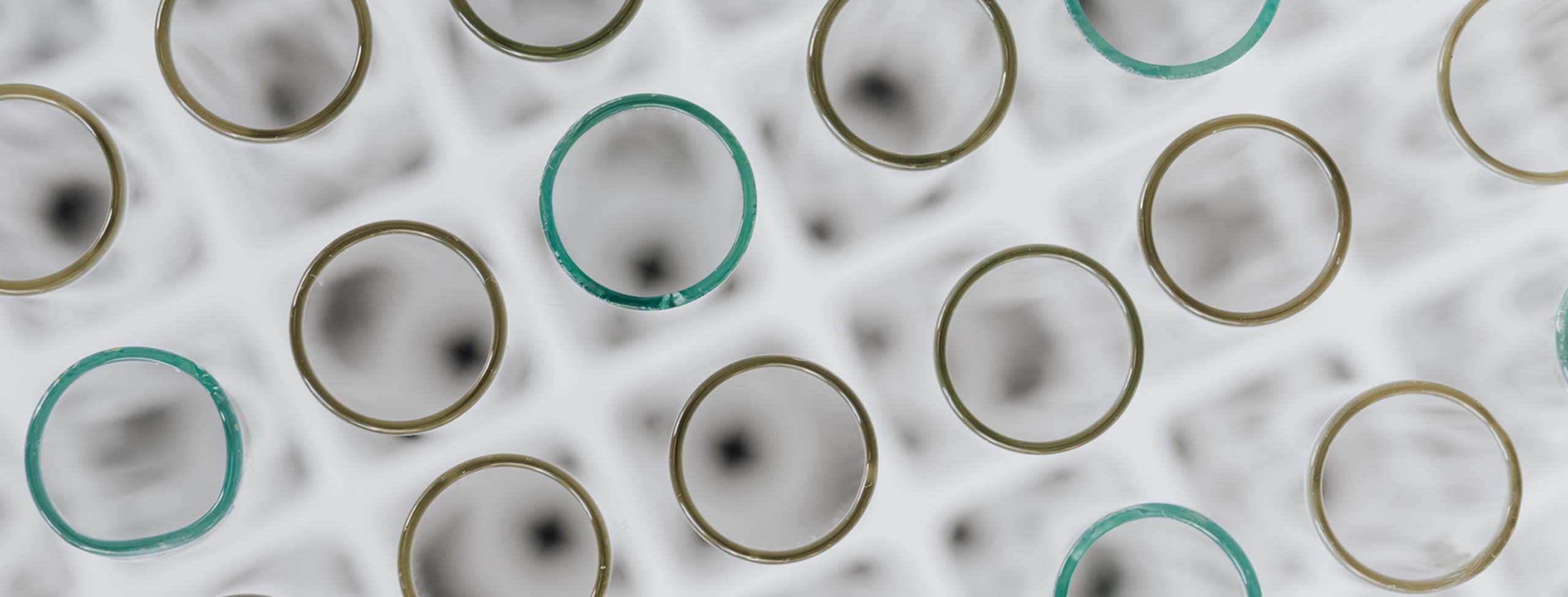
7 November 2023 • 12 minute read
FDA reveals key details about plan to bolster controversial oversight of LDTs
In an October 31, 2023 webinar, the Food and Drug Administration (FDA) revealed several key details about its implementation plan for last month’s draft rule addressing oversight of Laboratory Developed Tests (LDTs) – the latest move in a lengthy saga surrounding the regulation of LDTs.
The webinar provided insight into the implementation plan’s alignment with the next medical device user fee reauthorization in 2027, future efforts to help industry adapt, and a refusal to extend the deadline for public comment on the proposed rule, among others.
LDTs, which are described by FDA as “a type of in vitro diagnostic that is designed, manufactured and used within a single laboratory,” have been a hot topic for both Congress and FDA for over a decade, as we wrote about in July. FDA maintains that it has had the authority to regulate LDTs as medical devices since 1976, when Congress clarified that in vitro diagnostics (IVDs) are medical devices, but that it has exercised purposeful enforcement discretion over them.
In the last decade, FDA, stakeholders, and Congress have debated new authorities to clarify FDA’s regulation of IVDs, trying to find a solution that includes greater oversight of IVDs, including LDTs, to account for the risks of the product category that FDA sees.
Most recently, the Verifying Accurate Leading-Edge IVCT Development (VALID) Act was debated, but those discussions did not produce any new authorities or modifications to enable a more modern approach to regulating IVDs and left a void FDA intends to address.
As a result, FDA’s proposed rule simply removes the enforcement discretion in phases over the next four years to apply its medical device regulatory framework to IVDs.
How we got here
To briefly recap, in 2014, FDA issued a set of draft guidance documents, titled, “Framework for Regulatory Oversight of Laboratory Developed Tests (LDTs)“ and “FDA Notification and Medical Device Reporting for Laboratory Developed Tests (LDTs),” which clarified the Agency’s position that LDTs are included in the definition of a medical device. Accordingly, the Agency believed it had regulatory authority over these tests, although it historically opted to exercise enforcement discretion.
These draft guidance documents were greeted with controversy and never finalized. More recently (and within its proposed rule that is the subject of this writing), FDA expressed concern that LDT technology has significantly evolved in the past decades and the absence of regulatory oversight creates potential for increased risk to patients.
The VALID Act, which has previously been introduced in both the Senate and the House of Representatives, proposed a regulatory pathway specifically for in vitro clinical tests, including LDTs, recognizing the relative risks of such tests and tailoring review requirements accordingly.
This effort was also met with controversy, with stakeholders divided on the types of authorities and resources FDA should and should not have, and some stakeholders unconvinced that the risks posed by certain tests warranted FDA oversight.
In June 2022, the Senate Health, Education, Labor, and Pensions Committee included the VALID Act in a legislative package that was voted favorably out of committee by a vote of 13-9. However, stakeholders remained divided, and the bill was not considered before the House Energy and Commerce Committee, making it difficult to gain the consensus needed to pass both chambers.
The lack of congressional action to clarify FDA’s authorities over LDTs and create a modern regulatory pathway that accounts for the risks and benefits of such tests essentially put the ball back in FDA’s court.
FDA’s proposed rule
The actual change proposed to FDA’s regulations is relatively simple. The rule would amend the definition of IVDs in 21 CFR 809.3(a) to state that IVDs are devices under the Food Drug and Cosmetic Act, adding to the existing definition the following: “… including when the manufacturer of these products is a laboratory.” While this addition is short, it implicates a relatively large market. The bulk of FDA’s proposed rule is dedicated to justifying the change and elaborating on the legal basis. The Agency repeats its position that it has always had oversight and has, up to this point, been exercising enforcement discretion.
It is, however, notable that FDA has reversed its previous position in a few key areas. Specifically, FDA notes in the proposed rule that in 2017, it supported less oversight of certain categories of tests, such as low-risk tests, currently marketed tests, and tests detecting rare diseases – and even if such test technology is “relatively simple and well-understood” that it no longer supports its prior position. This is notable given FDA’s previous stance on the VALID Act, which included a risk-based framework that applied less burdensome regulatory requirements to tests in these and other categories.
Implementation of phaseout
The proposed rule also outlines a five-staged plan for implementation of oversight, and requests stakeholder feedback on certain considerations FDA may want to account for in the final rule. This staged approach will gradually phase out use of the agency’s enforcement discretion over four years keying off of the final rule’s publication date.
Stage 1: Effective 1 year following final rule – LDTs will be required to comply with Medical Device Reporting (MDR) requirements and correction and removal reporting requirements
Stage 2: Effective 2 years following final rule or approximately October 2025 – LDTs will be required to comply with registration and listing requirements, labeling requirements, and investigational use requirements
Stage 3: Effective 3 years following final rule or approximately October 2026 – LDTs will be required to comply with Quality System regulation requirements, including device CGMPs, design controls, purchasing controls, acceptance activities, corrective and preventative actions, and records requirements
Stage 4: Effective 3.5 years following final rule, but not before October 2027 – high-risk LDTs will be required to comply with device premarket review requirements
Stage 5: Effective 4 years following final rule, but not before April 2028 – moderate and low-risk LDTs will be required to comply with device premarket review requirements
Once a developer submits a premarket review by the required phase, FDA will generally exercise enforcement discretion and allow that test to remain on the market until FDA completes a review. In FDA’s October 31 webinar, it was noted that FDA expects the majority of LDTs subject to premarket review and application submission requirements will go through the 510(k) or De Novo device pathway, and furthermore that approximately half of those LDTs subject to the 510(k) program could take advantage of the existing third-party review program.
For reference, and to put future LDT cost implications in perspective, in fiscal year 2024, the cost of a 510(k) submission is $21,760 and $5,440 for small businesses; and the fee for a De Novo Classification Request is $145,068, with a small business fee of $36,267.[1] Currently, the annual establishment registration fee for manufacturers is $7,653.
Notably, in its October 31 webinar, FDA explained that it is aligning the implementation timelines with the next Medical Device User Fee Agreement (MDUFA) negotiation cycle to ensure consideration of additional user fee funding for IVD regulatory activities. The current MDUFA user fee program extends through September 30, 2027, at which point, Congress will need to reauthorize FDA’s authorities to collect user fees from the medical device industry in exchange for performance goals.
FDA estimates that the proposed rule would result in costs to the private sector as well as state, local, or tribal governments of more than $5 billion per year and benefits of ranging between $22 billion and $31 billion.
During the webinar, FDA was also asked about considerations for small businesses. The proposed rule acknowledges that “most of the facilities affected by this rule are defined as small businesses and the proposed rule is likely to impose a substantial burden on the affected small entities.” However, it leaves estimates for future small business fees to be determined by any future user fee negotiations.
Continued enforcement discretion for certain tests
In addition, in the October 31 webinar, FDA revealed that it has seen confusion in industry regarding the types of diagnostics FDA considers an LDT, and this has led to IVD manufacturers mistakenly believing their products are within scope of the enforcement discretion.
For example, FDA intends to continue exercising enforcement discretion over the following types of tests: tests that use manual techniques without automation, user of components legally marketed for clinical use, and tests used within a single CLIA certified laboratory that meets the requirements for high-complexity testing.
Also of note, the proposed rule explains that the Agency plans to continue exercising enforcement discretion for some LDTs in certain circumstances, such as certain tests used in connection with organ, stem cell, and tissue transplantations. FDA clarifies that tests for use during public health emergencies, blood donor, or human cell and tissue donor screening tests have been excluded from its long-standing general enforcement discretion, and therefore are not subject to the phase out policy.
However, FDA did clarify in the proposed rule that COVID-19 and monkeypox tests are still subject to the enforcement discretion policies that FDA instituted at the beginning of each public health emergency. The Agency plans to issue draft guidance on IVDs for emerging outbreaks and will seek public comment on it.
FDA stakeholder feedback request
FDA is seeking comment and feedback as part of its proposed rule in a few key areas, including:
- The public health rationale for continuing enforcement discretion for certain authorities for LDTs currently offered on the market and the indications for use or performance of the test remains unchanged, including specifically low and moderate risk LDTs. (This concept appears to be similar to the grandfathering provisions included the VALID Act to allow tests on the market to remain without requiring premarket review)
- The public health rationale for a longer phaseout period for IVDs offered as LDTs by laboratories with annual receipts below a certain threshold
- Whether tests should be treated differently if they are manufactured by an Academic Medical Center Laboratory
- How to best utilize other programs with oversight over IVDs, such as New York State Department of Health Clinical Laboratory Evaluation Program or the Veterans Health Administration
Potential challenges
Considering the controversy FDA has faced with past efforts to exercise oversight over LDTs, it is expected that the recent proposed rule will face similar challenges. Even as the proposed rule was being released, Senator Cassidy, ranking member of the Senate Health, Education, Labor and Pensions (HELP) Committee, released a statement that “[t]he FDA does not have the authority to unilaterally expand its regulatory jurisdiction. We saw during the pandemic how too much government interference and red tape could do more to delay lifesaving care…” Sen. Cassidy’s comments make clear that this newly proposed rule will not be spared the hurdles of earlier efforts. Notably, he also indicated that Congress might finally have an appetite to tackle the issue: “While past legislative efforts may have missed the mark, it is time for Congress to assert itself and clarify FDA’s authority in the regulation of diagnostic tests.”
In addition to the potential for congressional action similar to the earlier VALID efforts, FDA may also face litigation related to the exercise of oversight. Several recent cases, such as those related to decision making with respect to changes to the approved risk evaluation and mitigation strategies for mifepristone and public information campaign related to the off-label prescription of ivermectin for COVID-19, have shown that there is increasing scrutiny of FDA’s flexible application of its current or general authorities and a willingness of courts to entertain and uphold challenges that such flexible application of authority is an overstep. Given the amount of attention garnered by past efforts of FDA to govern LDTs, it will not be surprising if lawsuits follow the finalization of this newly proposed rule challenging FDA’s authority to regulate LDTs.
Looking forward
FDA plans to take steps to help industry adapt to these new requirements, such as publishing guidance and conducting townhall meetings. Stakeholders in the LDT industry should keep an eye out for future communications from the Agency on this.
Despite requests from many stakeholders, FDA made clear during the October 31 webinar that it does not intend to extend the 60-day comment period, so stakeholders should prioritize review and comment on the new rule by the December 4, 2023 deadline to Docket No. FDA-2023-N-2177.
In its messaging around a shift to heavier regulation of LDTs, FDA has made clear that it sees lack of oversight as a threat to public health which the Agency is responsible for addressing. Given the void created by Congress’s inaction on the issue, FDA faces a situation where they must act on their own to address a perceived public health concern. However, given the extensive troubled past of efforts to regulate LDTs, we strongly suspect that FDA has thoroughly reviewed the litigation risk of the proposed rule and likely expects many legal and other challenges ahead.
For more information on past issues related to FDA’s regulation of IVDs and LDTs and preparing for the evolving regulatory landscape, please contact your DLA Piper relationship partner or the authors of this alert.


